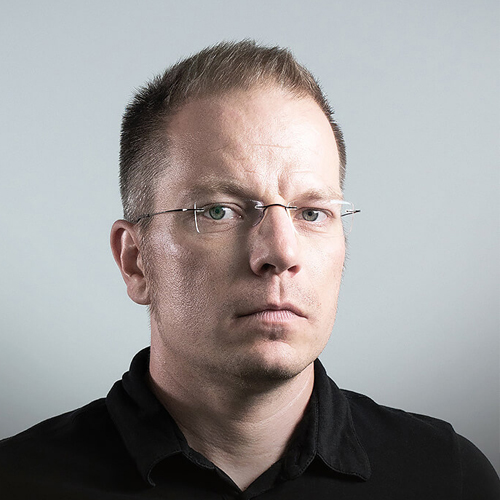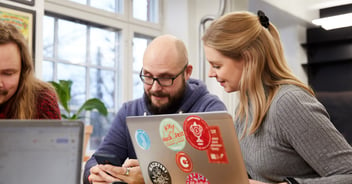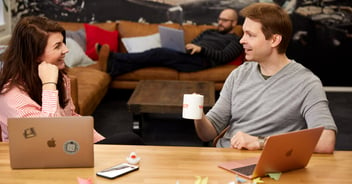Following the end of last summer, companies as well as other organizations and communities made a return to the office and the rest of “normal life” thanks to better vaccination coverage and the lifting of restrictions. We will again be faced with the same process once the latest wave in infections subsides. The seamlessness of the return to normal is likely to be different between individuals and organizations. Some may have great difficulties in getting their daily routines running again. Many will need to ask themselves whether returning to the old normal is possible or even worthwhile. Instead, we should perhaps be looking forward at the kinds of new capabilities and business needed in the new circumstances.
Where to find the necessary energy?
Still, the above may be easier said than done. If daily routines and running the operational side of business are posing a challenge, what then of the development of new business? What kind of damage have the past 18+ months of isolation and curling up in homes done to the community's ability to brainstorm and create new business, let alone develop new products and services?
Where, then, can we find that extra energy? One way to get people activated and energized is through fitness and exercise. When we exercise, our brain is rejuvenated to work with whole new energy (this article, too, came to be thanks to commutes by bicycle). How, then, can an entire work community be activated and energized to develop new business?
Our client was faced with these questions in the run-up to last summer. The company had behind it a year of working in isolation from home and an arduous project to reform business systems, the fires from which were still being put out. The focus of operations was heavily on day-to-day work. The work community’s coping and ability to develop new were under a great deal of strain.
The customer decided to trust our expertise, and a collaboration was born. We made plans to launch a business design project aimed at creating new concepts after the summer holidays. The window to create something new was open.
After summer came autumn. We launched the project and decided on three success criterias. Firstly, our client’s employees involved in project work should have a mutual and clear understanding of the current business situation and a vision of alternative futures in which business would be conducted. In addition, the client should obtain new ideas for business development as well as new proposals for potential business concepts. Thirdly, the participants should internalize the idea that futures thinking and foresight can be used as tools in systematic and continuous business development.
Futures thinking, foresight and scenario planning
Futures thinking generally refers to the ability to contemplate alternative futures and tie them to present-day choices. At the individual level are concepts such as future awareness while at the organization level, we can talk about future preparedness – the ability to use methods from futures studies in business development in the areas of strategy planning, innovation, risk and business continuity management, service designs, etc. Futures thinking revolves around four main thesis:
- The future cannot be predicted
- The future is not predetermined
- The future can be influenced (we are already living in the future)
- There are many possible futures
Future preparedness or foresight refers to efforts aimed at influencing and preparing for the future. Next, let's talk about how we can know, understand and influence the future. Foresight develops the organization's flexibility to changes, in other words its resilience. In companies, the timespan of foresight is often the same as the strategic planning window of 3-5 years. In industries where investments are large-scale and over the long term, the timespan of foresight can be several decades. What kinds of alternative business environments could there exist in 2050? How should we prepare for these scenarios, and how can their realization be influenced by what we do in the near future?
Scenarios are outlines of alternative futures. They offer visions of the future based on assumptions and the logical chains of events that lead to them. Scenarios are used to develop a vision of desirable, possible and even surprising futures (such as COVID-19) and how it is possible to influence their realization and prepare for their consequences. Scenarios are tools and starting points for decisions and development that have an impact on the future. They are themselves the end result and do not attempt to predict the future.
Scenario planning is typically done as part of strategic planning and decision-making but it also has other applications, for example in the risk management of a long-term system development project. When we identify the risks of a project and the forces of change that influence, we can develop alternative visions of the future and the development paths that lead to them. What are the things that guide us towards the goal? What will lead us away from the desired path? Answering these questions provides a better understanding of the decisions and measures needed in order to steer the project towards a desired future.
Inclusion and collaboration as drivers of new ideas
Concrete actions taken in our client project included background research (industry reports, competitors, employee and customer interviews), workshops and workgroups, and reporting and presentation of results. We facilitated three workshops. The first focused on assessing the current state of the client's business and outlining future scenarios for the business environment. The second workshop focused on brainstorming scenario-based ideas on how to develop the business and created concepts for new business opportunities. The third workshop assessed the previously created business concepts that had been refined further by workgroups and drafted a preliminary development roadmap for selected concepts.
Some of our client's employees who participated in the project had never seen each other face-to-face before. Many had worked remotely for the past 18 months. The focus was firmly on running day-to-day operations of the business. I admit that on the eve of the first workshop, I was nervous what would come of the collaboration. For this reason, it was amazing and inspiring to see how actively employees threw themselves to the workshop activities and discussions about the future. The topic of the future, combined with spending time and interacting face-to-face with others, clearly energized the group to work towards common goals.
Having experienced this kind of energy first hand, I encourage all remote employees to crawl out of their homes once the pandemic again subsides. You may be surprised to see how much your own work can be energized by interactions with the work community. The pandemic is still ongoing, and it is possible we haven’t seen the last wave. In spite of, and perhaps precisely because of this, we should set our sights and efforts on the future.
Thanks to the project’s motivated participants, our client gained, among other results,
- A clear and shared understanding of the current business situation
- Over 200 new ideas for business development
- Nine refined and evaluated concepts for new business
- Concrete suggestions for issues to focus on in next year’s business planning
- Practical experience in inclusive, future-oriented business development
- Practices and models for developing the organization's future planning
Interested in exploring the possible futures of your organization or business? Contact Heidi:
Heidi Tetri
Business Design Director
heidi.tetri@vincit.fi
+358 44 989 4330
NB. If you’re interested about futures thinking, I warmly recommend reading Sitra’s publications on the topic. A great place to begin exploring the themes of scenario-oriented thinking and planning is the article Skenaariotyöskentely Tulevaisuuksientutkimuksessa (in Finnish) by Anita Rubin (1952-2015).



